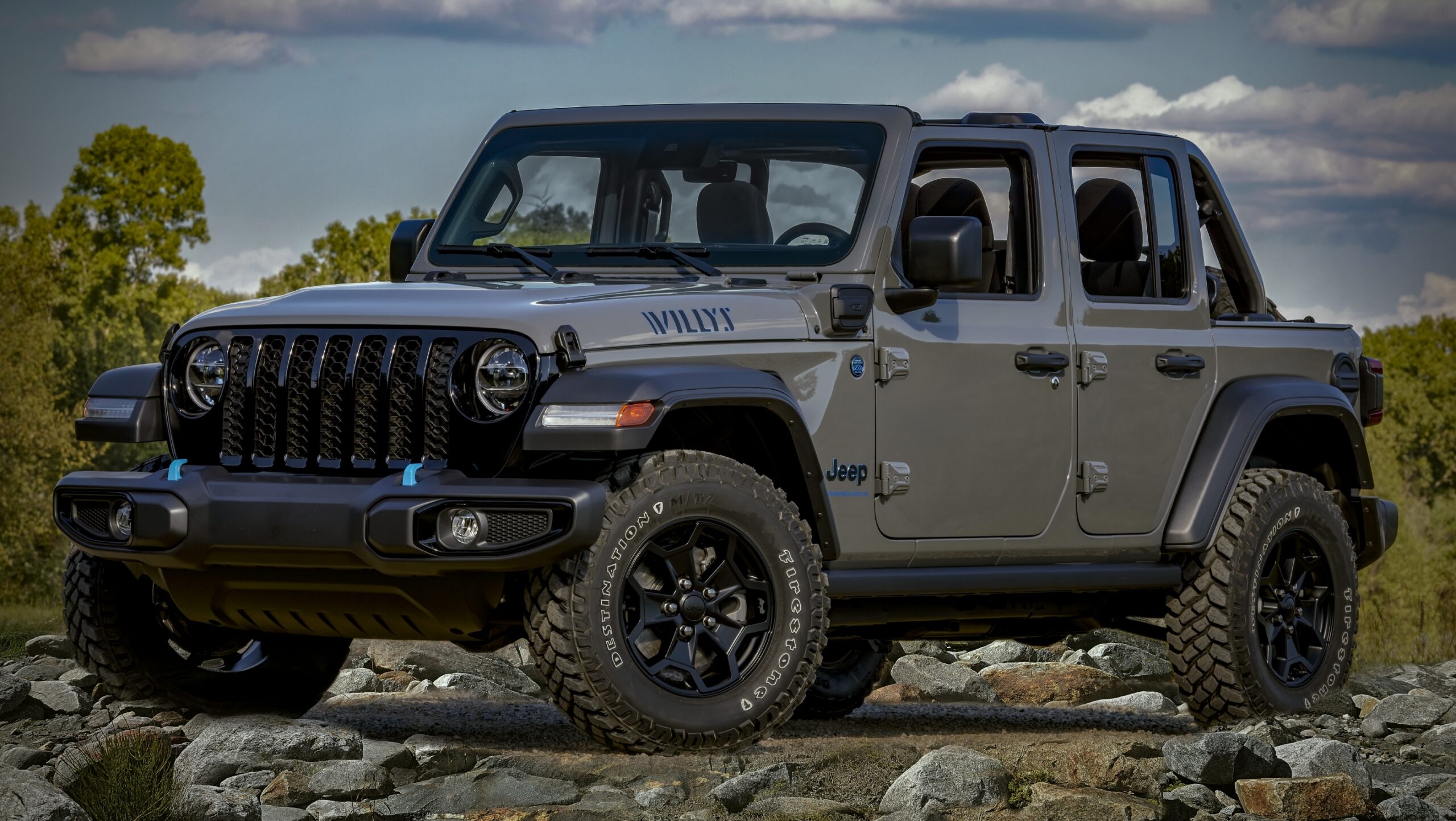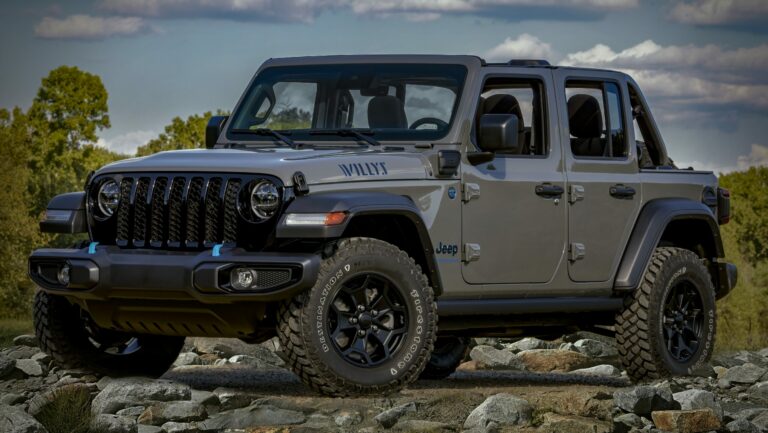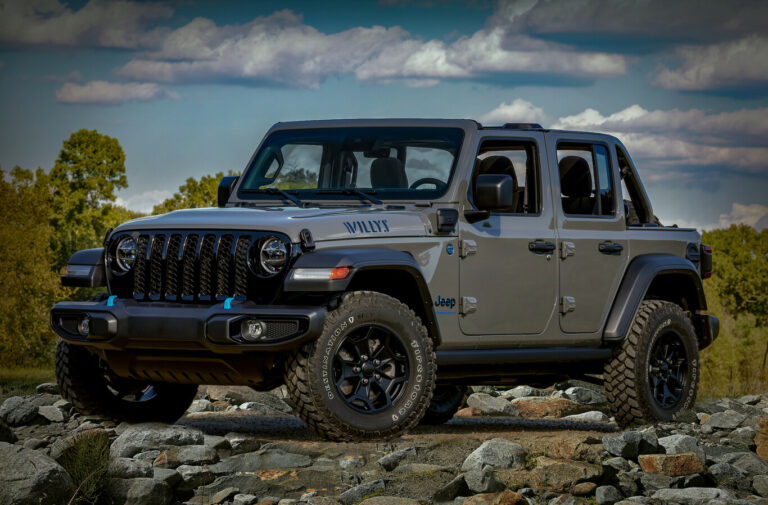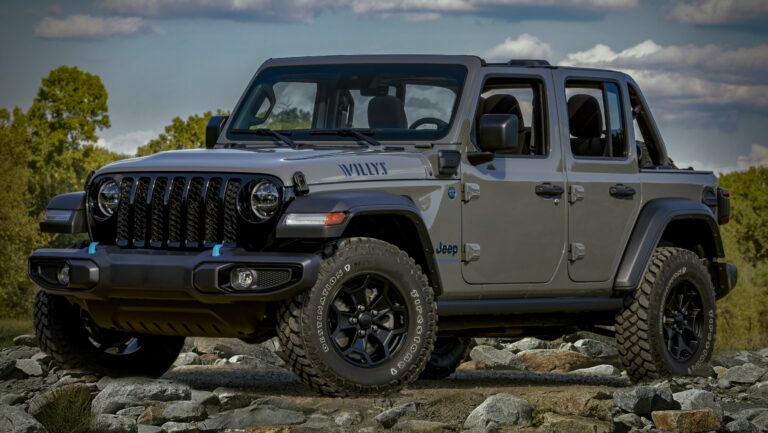Jeep Wrangler 2 Door Fuel Economy
Jeep Wrangler 2 Door Fuel Economy jeeps.truckstrend.com
The Jeep Wrangler 2-Door stands as an icon of off-road capability and open-air freedom, a vehicle cherished by enthusiasts for its rugged charm and go-anywhere attitude. However, amidst the discussions of articulation, ground clearance, and removable doors, one topic frequently arises that holds significant importance for daily drivers and long-haul adventurers alike: fuel economy. Understanding the nuances of Jeep Wrangler 2-Door fuel economy isn’t just about saving money at the pump; it’s about managing expectations, optimizing performance, and making informed decisions about your vehicle’s operation and potential modifications. For many, it’s a crucial aspect of overall ownership costs and environmental considerations, making it a topic worthy of thorough exploration.
Understanding the Basics: What Influences Wrangler 2-Door Fuel Economy?
Jeep Wrangler 2 Door Fuel Economy
The fuel efficiency of any vehicle is a complex interplay of various factors, and the Jeep Wrangler 2-Door, with its unique design and purpose, is no exception. Its boxy shape, heavy-duty components, and emphasis on off-road prowess inherently impact its aerodynamic efficiency and overall weight, both critical to MPG.
- Engine Types: Modern Wrangler 2-Door models (JL generation, 2018-present) primarily offer two engine options:
- 3.6L Pentastar V6: A naturally aspirated engine known for its reliability and smooth power delivery, standard across many trims.
- 2.0L Turbo Inline-4: A turbocharged engine offering more torque lower in the RPM range, often perceived as more efficient.
- Older JK generation (2007-2017) Wranglers also primarily used the 3.6L Pentastar V6, replacing older 3.8L V6 and 4.0L I6 engines.
- Transmission Types: Both engines are typically paired with either a 6-speed manual transmission or an 8-speed automatic transmission. The automatic generally offers better fuel economy due to its wider gear ratios and optimized shift points.
- Gearing (Axle Ratios): The differential gearing (e.g., 3.45, 3.73, 4.10) significantly impacts how the engine’s power is translated to the wheels. Higher numerical ratios (like 4.10) provide more low-end torque, which is excellent for off-roading and crawling, but results in higher engine RPMs at highway speeds, thus reducing fuel efficiency.
- Vehicle Weight and Aerodynamics: The Wrangler’s robust frame, solid axles, and overall rugged construction contribute to its considerable curb weight. Its upright windshield and flat panels, while iconic, are aerodynamically inefficient compared to sleeker passenger cars. This inherent design is a primary limiting factor for fuel economy.
- Tire Size and Type: Stock tires are chosen for a balance of on-road manners and off-road capability, with relatively efficient rolling resistance. Larger, heavier, and more aggressive off-road tires (like mud-terrains) have significantly higher rolling resistance and add unsprung weight, which directly translates to worse fuel economy.


Official EPA Estimates vs. Real-World Performance
The Environmental Protection Agency (EPA) provides estimated fuel economy figures based on standardized testing. While these figures offer a useful baseline for comparison, real-world driving often yields different results for a variety of reasons.
For recent (JL generation) Jeep Wrangler 2-Door models, the EPA estimates generally fall within these ranges:
- 3.6L Pentastar V6 (Automatic): Around 19-20 MPG combined (18 city / 22-23 highway).
- 3.6L Pentastar V6 (Manual): Slightly lower, around 18-19 MPG combined (17 city / 21-22 highway).
- 2.0L Turbo I4 (Automatic): Often the most efficient option, around 21-23 MPG combined (22-24 city / 24-25 highway).

Why Real-World Mileage Differs: EPA tests are conducted in controlled environments. Your driving habits, terrain, maintenance, and vehicle modifications all play a significant role in actual fuel consumption. Many Wrangler owners report real-world MPG figures that are 1-3 MPG lower than EPA estimates, especially if they engage in off-roading, have aftermarket modifications, or drive aggressively.
Factors Affecting Your Wrangler’s MPG
Beyond the inherent design, several dynamic factors can significantly swing your Wrangler’s fuel economy figures.
- Driving Habits: This is arguably the most impactful variable.
- Aggressive Acceleration and Braking: Rapid acceleration consumes more fuel, and sudden braking wastes the energy you just used to accelerate. Smooth, gradual inputs are key.
- Speed: Fuel economy generally decreases sharply above 60-65 mph due to increased aerodynamic drag. The Wrangler’s boxy shape exacerbates this.
- Idling: Modern engines are efficient, but idling still consumes fuel without covering distance.
- Maintenance: A well-maintained vehicle runs more efficiently.
- Tire Pressure: Underinflated tires increase rolling resistance and can reduce fuel economy by up to 3% for every 10 PSI below recommended pressure.
- Oil Changes: Fresh, correct-grade oil reduces engine friction.
- Air Filter: A clogged air filter restricts airflow to the engine, forcing it to work harder.
- Spark Plugs: Worn spark plugs can lead to misfires and inefficient combustion.
- Modifications: The vast aftermarket for Wranglers is a double-edged sword for MPG.
- Lift Kits: Increase aerodynamic drag by raising the vehicle’s profile.
- Larger/Heavier Tires: Significantly increase rolling resistance, rotational mass, and unsprung weight, leading to a substantial drop in MPG (often 3-5 MPG or more).
- Heavy Bumpers, Winches, Roof Racks: Add considerable weight and/or increase aerodynamic drag.
- Environmental Factors:
- Temperature: Cold weather reduces fuel efficiency due to denser air, slower engine warm-up, and thicker oil.
- Altitude: At higher altitudes, the air is thinner, reducing engine power and potentially affecting fuel efficiency, though modern ECUs compensate somewhat.
- Headwinds: Driving into a strong headwind dramatically increases aerodynamic resistance.
- Payload/Towing: Carrying heavy loads or towing a trailer significantly increases the engine’s workload, reducing fuel economy.
Strategies to Improve Your Jeep Wrangler 2-Door Fuel Economy
While a Wrangler will never be a hybrid, there are practical steps you can take to optimize its fuel efficiency.
- Embrace Gentle Driving:
- Smooth Acceleration and Braking: Anticipate traffic and brake early and gently. Accelerate gradually.
- Maintain Moderate Speeds: Stick to speed limits, especially on highways. Driving at 65 mph instead of 75 mph can yield noticeable savings.
- Use Cruise Control: On flat highways, cruise control helps maintain a steady speed, avoiding unnecessary acceleration and deceleration.
- Adhere to Maintenance Schedules:
- Check Tire Pressure Regularly: At least once a month, ensure tires are inflated to the recommended PSI (found on the driver’s side door jamb).
- Perform Routine Maintenance: Follow the manufacturer’s recommendations for oil changes, air filter replacement, spark plugs, and fluid checks.
- Minimize Unnecessary Weight and Drag:
- Remove Unused Gear: Don’t haul around heavy tools, recovery gear, or roof rack attachments if you don’t need them for your current trip.
- Consider Aerodynamic Add-ons: While rare for Wranglers, some soft tops or hardtop configurations might be marginally more aerodynamic than others. Removing a soft top or doors for open-air driving will significantly increase drag.
- Smart Tire Choices:
- Right-Size Tires: If your Wrangler is primarily a daily driver, resist the urge for excessively large or aggressive off-road tires. Stick closer to stock sizes or opt for all-terrain tires with lower rolling resistance.
- Load Range: Ensure your tires have the appropriate load range for your vehicle; overly stiff tires can also affect ride quality and potentially wear.
- Plan Your Trips: Combine errands to reduce cold starts and short trips, as engines are least efficient when cold.
Is the 2-Door More Fuel Efficient than the 4-Door?
Generally, yes. The Jeep Wrangler 2-Door typically boasts slightly better fuel economy than its 4-Door counterpart (Wrangler Unlimited) when equipped with the same engine and transmission. This is primarily due to:
- Lighter Weight: The 2-Door model is significantly lighter, requiring less energy to move.
- Shorter Wheelbase: While less impactful than weight, a shorter vehicle can have marginally less drag.
The difference isn’t dramatic, usually around 1-2 MPG combined, but it’s a consistent advantage for the 2-Door model.
Challenges and Considerations
It’s crucial to set realistic expectations for Jeep Wrangler 2-Door fuel economy.
- It’s a Jeep, Not a Prius: The Wrangler is purpose-built for off-road capability, durability, and a unique driving experience. Fuel efficiency is a secondary concern in its design. Expecting car-like MPG will lead to disappointment.
- Off-Roading Drastically Reduces MPG: When you’re crawling over rocks or slogging through mud in 4WD Low, fuel consumption skyrockets. This is normal and expected for the activity.
- The "Jeep Tax" on Fuel Economy: Owning a Wrangler often means embracing its quirks, and a less-than-stellar MPG is one of them. The trade-off is unparalleled capability and a community of enthusiasts.
Jeep Wrangler 2 Door Fuel Economy Estimates (EPA)
The following table provides typical EPA estimated fuel economy figures for recent (JL generation) Jeep Wrangler 2-Door models. Actual mileage will vary.
| Model Year Range | Engine | Transmission | City MPG | Highway MPG | Combined MPG | Notes |
|---|---|---|---|---|---|---|
| 2018-Present | 3.6L Pentastar V6 | 8-speed Auto | 18 | 23 | 20 | Most common configuration |
| 2018-Present | 3.6L Pentastar V6 | 6-speed Manual | 17 | 21 | 18 | Slightly less efficient than auto |
| 2018-Present | 2.0L Turbo I4 | 8-speed Auto | 22 | 24 | 23 | Often the most fuel-efficient option |
| 2021-Present | 3.0L EcoDiesel V6* | 8-speed Auto | 22 | 29 | 25 | *Rare in 2-Door; primarily 4-Door option. |
| 2012-2017 (JK) | 3.6L Pentastar V6 | 5-speed Auto | 17 | 21 | 18 | Previous generation (for comparison) |
| 2012-2017 (JK) | 3.6L Pentastar V6 | 6-speed Manual | 17 | 21 | 18 | Previous generation (for comparison) |
Note: The 3.0L EcoDiesel V6 was primarily offered in the 4-door Wrangler Unlimited and was very rare, if at all available, in the 2-door configuration. It’s included for completeness but isn’t a common 2-door option.
Frequently Asked Questions (FAQ)
Q1: Is the 2.0L turbo engine really more fuel-efficient than the 3.6L V6 in the Wrangler 2-Door?
A1: Yes, generally. EPA estimates show the 2.0L Turbo I4 with the 8-speed automatic achieving slightly better combined MPG than the 3.6L Pentastar V6 with the same transmission. This is due to the turbo engine’s ability to produce more torque at lower RPMs, reducing the need to rev higher.
Q2: How much does installing bigger tires affect my Wrangler’s MPG?
A2: Significantly. Going from stock tires to larger (e.g., 35-inch) and heavier off-road tires can reduce your fuel economy by 3-5 MPG or even more, depending on tire type, weight, and your driving style. Re-gearing to compensate for the larger tires can help recover some lost performance, but not necessarily fuel economy.
Q3: Does lifting a Jeep Wrangler 2-Door affect its fuel economy?
A3: Yes. Lifting a Wrangler increases its frontal area and disrupts its already poor aerodynamics, leading to increased drag. This typically results in a small but noticeable decrease in fuel economy, often around 1-2 MPG, in addition to the effects of larger tires if installed concurrently.
Q4: What’s the best way to get good MPG in a Wrangler?
A4: The most effective methods are driving smoothly and moderately (avoiding aggressive acceleration/braking and high speeds), maintaining proper tire pressure, performing regular maintenance, and minimizing unnecessary weight and aerodynamic drag from accessories.
Q5: Why is my real-world MPG lower than the EPA estimates?
A5: EPA tests are conducted in controlled conditions. Real-world driving involves varying terrain, traffic, weather, driver habits (which are often more aggressive than test cycles), and vehicle modifications, all of which can lead to lower actual MPG.
Conclusion
The Jeep Wrangler 2-Door Fuel Economy is a topic that requires a balanced perspective. While it will never be a segment leader in efficiency, understanding the factors that influence its MPG and adopting smart driving and maintenance habits can significantly impact your ownership experience. The inherent design of the Wrangler prioritizes ruggedness, off-road capability, and a unique open-air lifestyle over fuel savings. By being realistic about its capabilities and limitations, and by implementing the practical advice provided, Wrangler owners can optimize their fuel consumption without compromising the very essence of what makes this iconic vehicle so special. Embrace the adventure, manage your expectations, and enjoy the ride.





